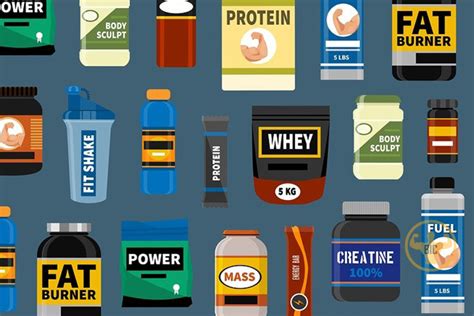How to break through strength plateaus for peak muscle growth & performance?

Every dedicated lifter eventually encounters a strength plateau – that frustrating point where progress stalls, weights feel heavier, and gains seem to come to a screeching halt. While disheartening, plateaus are a natural part of the fitness journey, indicating that your body has adapted to its current routine. The good news is that they are not insurmountable. By strategically adjusting your approach, you can break through these barriers and continue on your path to peak muscle growth and performance.
Understanding the Plateau: Why Do We Get Stuck?
Before you can break through a plateau, it’s essential to understand why it happens. Your body is incredibly efficient; once it adapts to a specific stimulus (your workout routine), it stops needing to adapt further. Common culprits include:
- Lack of Progressive Overload: Not consistently increasing the demand on your muscles.
- Overtraining: Too much volume or intensity without adequate recovery.
- Insufficient Recovery: Poor sleep, high stress, or inadequate rest days.
- Nutritional Deficiencies: Not consuming enough calories or protein to support muscle repair and growth.
- Repetitive Routine: Doing the same exercises, sets, and reps for too long.
- Form Breakdown: Compensating with poor form as weights get heavier, leading to less effective muscle stimulation.

Strategic Approaches to Shatter Plateaus
1. Re-Evaluate Progressive Overload
Progressive overload isn’t just about adding more weight. It encompasses any method of increasing the demand on your muscles over time. If increasing weight isn’t working, consider other variables:
- Increase Reps or Sets: Gradually add one more rep or an extra set.
- Decrease Rest Time: Shorten rest periods between sets to increase intensity.
- Improve Tempo: Slow down the eccentric (lowering) phase or incorporate pauses.
- Increase Frequency: Train a muscle group more often (within reason and with proper recovery).
- Improve Form: A stricter form often means better muscle activation, even if it means temporarily using less weight.
2. Vary Your Training Variables
Your body thrives on novelty. Periodically changing your routine can shock your system into new growth:
- Exercise Variation: Swap out compound lifts (e.g., barbell bench press for dumbbell press, back squats for front squats).
- Rep Ranges: Alternate between low reps (strength focus) and higher reps (hypertrophy/endurance focus).
- Training Splits: Experiment with different splits (e.g., full body, upper/lower, push/pull/legs).
- Training Modalities: Incorporate resistance bands, chains, or different machines.

3. Implement Advanced Training Techniques
Once you have a solid foundation, these techniques can provide an extra stimulus:
- Drop Sets: Perform a set to failure, then immediately reduce the weight and continue.
- Supersets/Trisets: Perform two or three exercises back-to-back with no rest.
- Partial Reps: Work through a specific, challenging range of motion to strengthen sticking points.
- Negatives: Focus solely on the eccentric (lowering) phase of a lift, often with heavier weight and a spotter.
- Rest-Pause Training: Lift a heavy weight for a few reps, rest briefly, then continue for more reps.
4. Embrace Periodization
Periodization involves structuring your training into cycles with varying intensity and volume. This prevents overtraining and allows for strategic peaks in performance. A common approach involves:
- Accumulation Phase: Higher volume, moderate intensity.
- Intensification Phase: Lower volume, higher intensity.
- Deload Phase: Reduced volume and intensity to aid recovery and resensitize muscles to training stimulus.

5. Optimize Nutrition and Hydration
Your body needs fuel to perform and repair. If you’re not eating enough calories (especially protein), muscle growth will stall. Ensure you are:
- In a Caloric Surplus: To build muscle, you generally need to consume more calories than you burn.
- Consuming Adequate Protein: Aim for 1.6-2.2 grams of protein per kg of body weight daily.
- Getting Enough Carbohydrates: Carbs fuel intense workouts and aid recovery.
- Staying Hydrated: Water is crucial for metabolic processes and performance.
- Consider Supplementation: Creatine, BCAAs, and protein powder can support your goals, but whole foods come first.
6. Prioritize Recovery and Sleep
Muscle growth happens outside the gym. Neglecting recovery is one of the fastest ways to hit a plateau:
- Get 7-9 Hours of Quality Sleep: This is when your body repairs and rebuilds.
- Incorporate Deload Weeks: Every 4-8 weeks, reduce your training volume and intensity to allow for full recovery.
- Active Recovery: Light cardio, stretching, or foam rolling can improve blood flow and reduce soreness.
- Manage Stress: High stress levels can negatively impact recovery and hormonal balance.

Track and Adapt
Breaking through plateaus requires an analytical approach. Keep a detailed training log to track your lifts, reps, sets, and perceived exertion. This data will help you identify what’s working and what’s not. Be patient, consistent, and willing to experiment. Your body is constantly adapting, and your training strategy should too.

Conclusion
Strength plateaus are not roadblocks; they are opportunities to learn, adapt, and refine your training. By implementing a combination of progressive overload variations, diverse training techniques, smart nutrition, and dedicated recovery, you can effectively overcome these challenging phases. Stay persistent, listen to your body, and celebrate every small breakthrough – because consistent, intelligent effort is the ultimate key to unlocking peak muscle growth and performance.








